Plants vs. Iodine
Find ascorbic acid in plants using iodine!
Reagents
Safety
- Put on protective eyewear. Put protective gloves on before step 2.
- Conduct the experiment on the plastic tray and in a well-ventilated area.
- Avoid inhaling iodine vapors from the cup.
- Do not allow chemicals to come into contact with the eyes or mouth.
- Keep young children, animals and those not wearing eye protection away from the experimental area.
- Store this experimental set out of reach of children under 12 years of age.
- Clean all equipment after use.
- Make sure that all containers are fully closed and properly stored after use.
- Ensure that all empty containers are disposed of properly.
- Do not use any equipment which has not been supplied with the set or recommended in the instructions for use.
- Do not replace foodstuffs in original container. Dispose of immediately.
- In case of eye contact: Wash out eye with plenty of water, holding eye open if necessary. Seek immediate medical advice.
- If swallowed: Wash out mouth with water, drink some fresh water. Do not induce vomiting. Seek immediate medical advice.
- In case of inhalation: Remove person to fresh air.
- In case of skin contact and burns: Wash affected area with plenty of water for at least 10 minutes.
- In case of doubt, seek medical advice without delay. Take the chemical and its container with you.
- In case of injury always seek medical advice.
- The incorrect use of chemicals can cause injury and damage to health. Only carry out those experiments which are listed in the instructions.
- This experimental set is for use only by children over 12 years.
- Because children’s abilities vary so much, even within age groups, supervising adults should exercise discretion as to which experiments are suitable and safe for them. The instructions should enable supervisors to assess any experiment to establish its suitability for a particular child.
- The supervising adult should discuss the warnings and safety information with the child or children before commencing the experiments. Particular attention should be paid to the safe handling of acids, alkalis and flammable liquids.
- The area surrounding the experiment should be kept clear of any obstructions and away from the storage of food. It should be well lit and ventilated and close to a water supply. A solid table with a heat resistant top should be provided
- Substances in non-reclosable packaging should be used up (completely) during the course of one experiment, i.e. after opening the package.
FAQ and troubleshooting
The experiment can fail if the fruits and vegetables were poorly pressed to the paper or there was too much iodine on the paper. It is very important to only apply one layer of iodine solution! Moreover, it’s possible the produce wasn’t actually resting on the iodine paper. Try asking a parent or supervising adult to help you cut your fruits as flat as possible.
No! Even though the slices you used in the experiment might still look edible, they have been in contact with chemical reagents. Dispose of them with household garbage or compost.
It means that you got a successful result! These spots appear when iodine turns into colorless iodide ions. This process happens due to the reducing agents (particularly ascorbic acid) in the fruits and vegetables you applied to the paper. The less iodine staining you see on the paper under a fruit slice, the more ascorbic acid and other reducing agents are present in the slice.
Step-by-step instructions
Prepare a slice of potato and a slice of lemon.
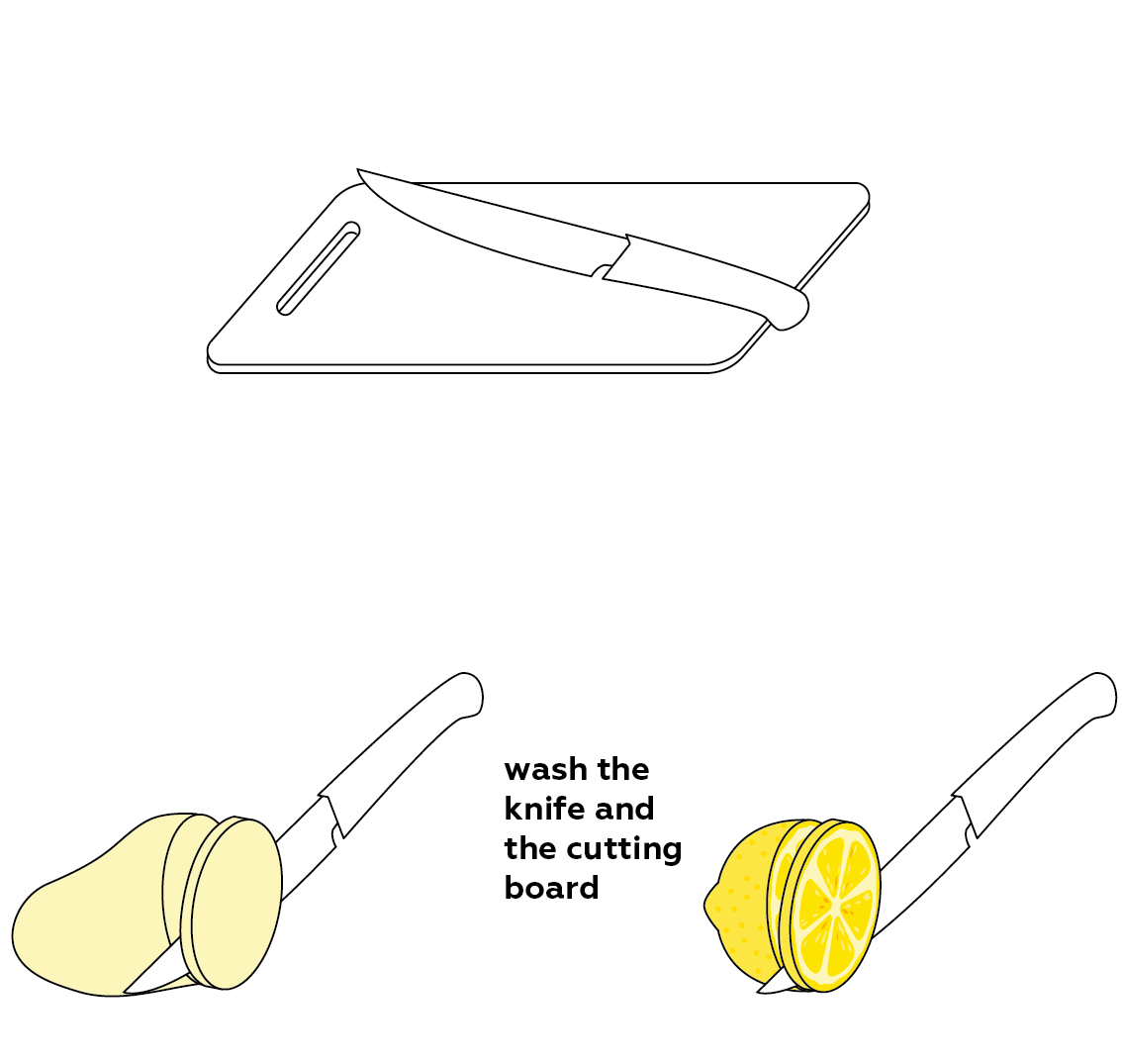
Potassium iodide KI contains iodide ions I-, which we can turn into iodine molecules I2 using CuSO4.
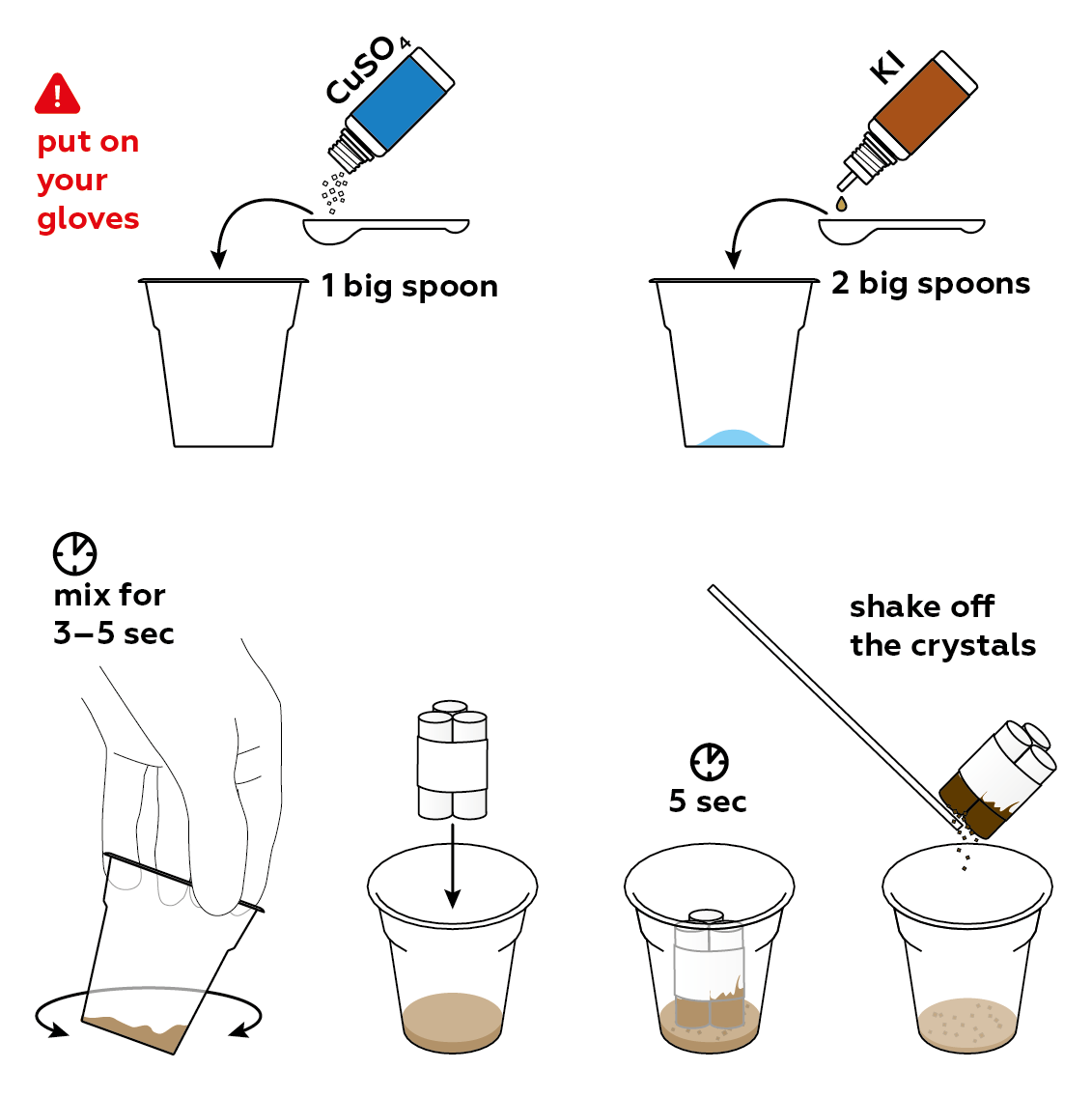
Apply one layer of iodine I2 solution to a sheet of paper.
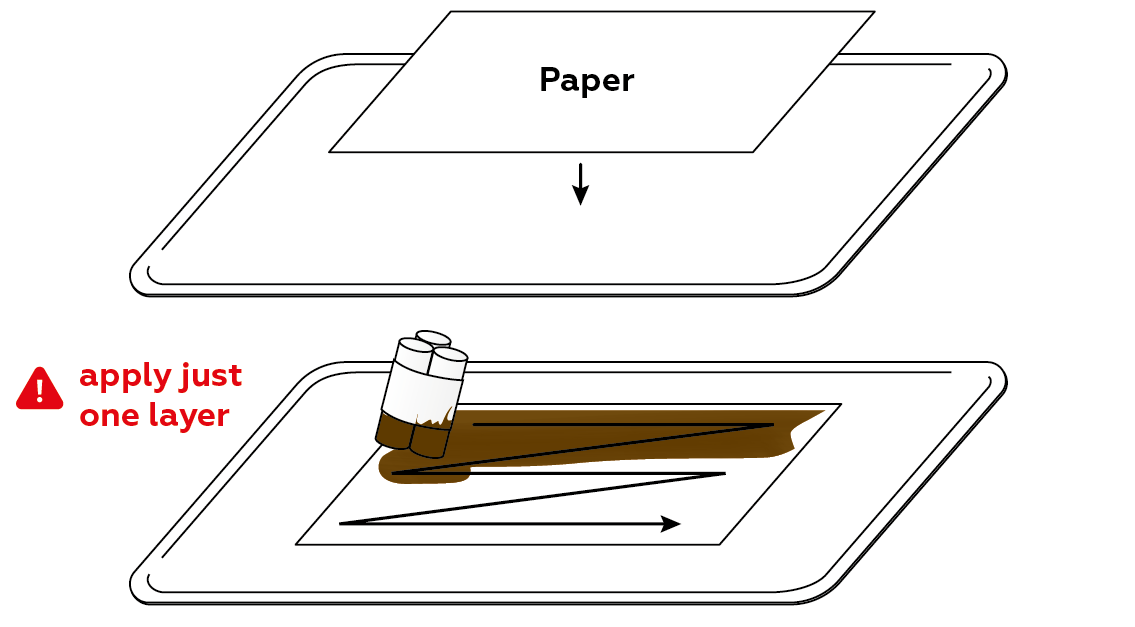
Put the slices on the paper.
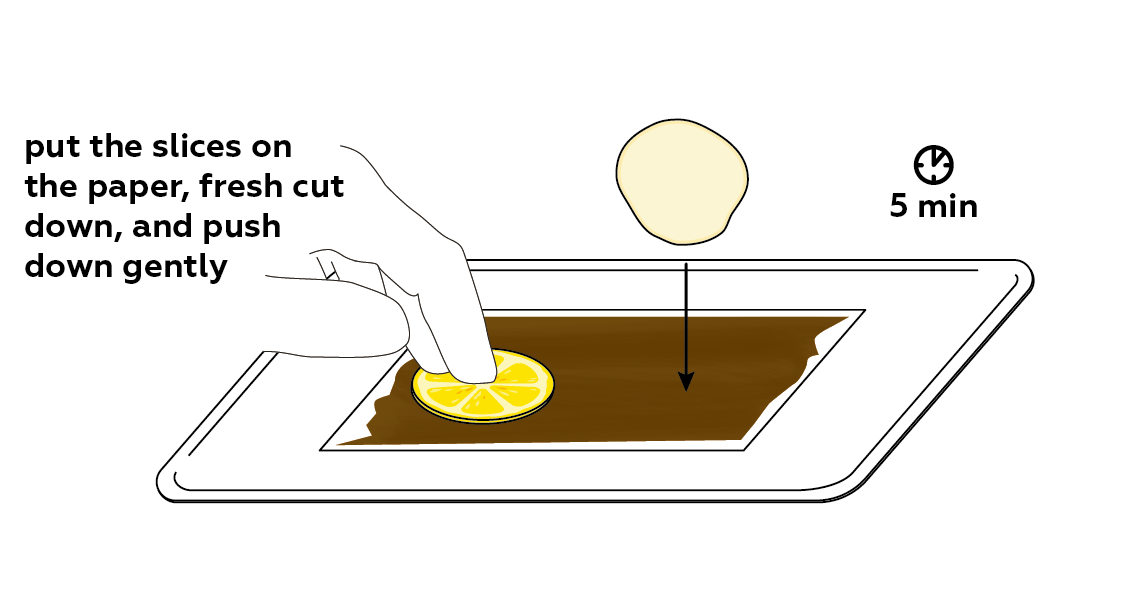
Compare what happened with the iodine beneath your slices.
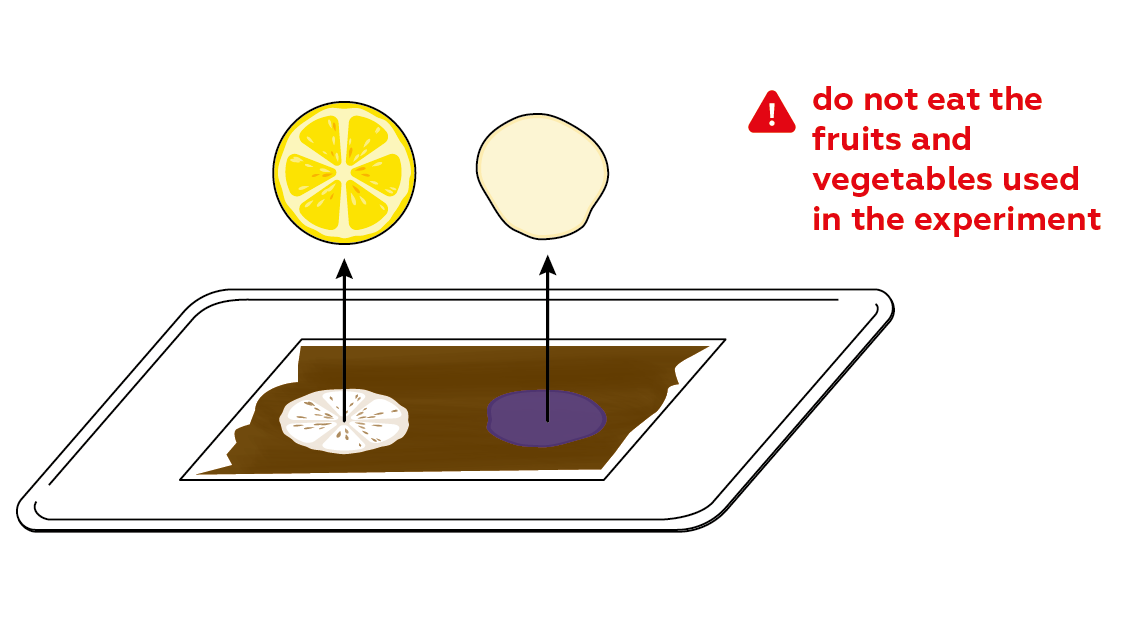
Disposal
Dispose of solid waste together with household garbage. Pour solutions down the sink and wash with an excess of water.
Scientific description
What is ascorbic acid and why do we need it?









How do we obtain iodine in this experiment?
Iodine forms when copper sulfate CuSO4 meets the solution of potassium iodide KI. This leads to the following reaction:
2CuSO4 + 2KI → Cu2SO4 + K2SO4 + I2
This is iodine, which makes the solution brownish.
Follow up
Try out and compare various fruits and vegetables! You can likely expect the most interesting results from red bell peppers, lemons, kiwis, and bananas. We also recommend trying tangerines, grapes, and apples.